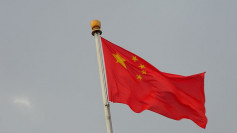The Myanmar government have had a longstanding conflict with opium farmers on the country's mountainous eastern region. The country even went as far as given these farmers incentives just to lure them out of the illegal opium trade. Despite these incentives, opium farmers continue their operation due to the high profitability of the illegal crop.
Opium is a substance that is derived from the opium poppy plant. This substance mainly used for the production of heroin and a number of synthetic opioids, the former being a major illicit drug and the latter used for medicinal purposes.
Myanmar is the world's second-biggest source of opium, first being the Middle East country of Afghanistan. In Myanmar, the Shan state is considered as the main production hub of this illicit crop. Recent data have revealed that the amount of land being used for the cultivation of opium in the country has declined. However, ongoing conflicts in the country have seriously hampered the government's ability to completely wipe out the cultivation of opium.
Opium trade continues to thrive despite setbacks and opposition from the government. This fact has led many farmers in Myanmar to continue their illicit activities as it yields more money compared to when they cultivate a legal crop.
According to the United Nations Office on Drugs and Crime, around 37,300 hectares of land in Myanmar is being used to cultivate opium. While still a huge area, this is a significant drop compared to 41,000 hectares used in 2017. Close to 90 percent of all opium being cultivated in Myanmar are grown in the country's north-eastern state of Shan where government forces continue to fight various ethnic rebel groups.
In a report, the United Nations Office on Drugs and Crime stated, "The biggest drops in cultivation have been seen in areas that have had relatively good security. However, in parts of Shan and Kachin experiencing a protracted state of conflict, high concentrations of poppy cultivation have continued - a clear correlation between conflict and opium production."
Myanmar has been in conflict with various rebel and drug groups for decades. Majority of these illegal operations are located in the region called the "Golden Triangle" which is infamous for its drug trade. This particular piece of land is located in the border of Myanmar, Laos, and Thailand. It is also called the center of the world's opium and heroin trade.






